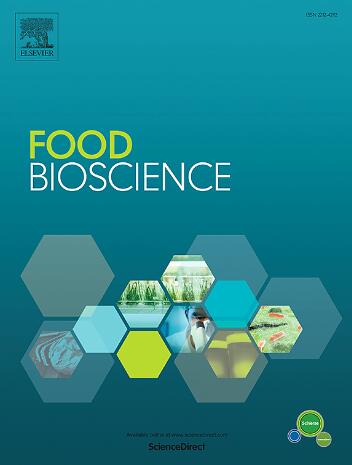Farnesol regulates morphogenesis and squalene biosynthesis in Saccharomycopsis fibuligera: A multi-omics perspective
IF 4.8
1区 农林科学
Q1 FOOD SCIENCE & TECHNOLOGY
引用次数: 0
Abstract
Our previous research found that farnesol, a fungal quorum-sensing molecule, may simultaneously regulate the yeast-to-hypha transition and promote squalene biosynthesis in Saccharomycopsis fibuligera. To confirm this, in this study, we conducted farnesol exposure experiments and analyzed the changes in morphology and squalene content of S. fibuligera. The structure and function of S. fibuligera squalene synthase (SfSQS) were analyzed using molecular docking simulations and protein expression. Metabolomics and tandem mass tag (TMT)-labeling proteomics were employed to investigate the mechanisms underlying farnesol-induced morphogenesis and metabolic changes in S. fibuligera.
The results showed that treatments with 50 μmol/L and 100 μmol/L farnesol significantly increased squalene content by over 1.67-fold in S. fibuligera. High concentrations of farnesol promoted hyphal elongation while suppressing yeast-form cell growth in S. fibuligera. Analysis of SfSQS demonstrated that it forms stable binding complexes with farnesyl pyrophosphate (FPP) and presqualene diphosphate and exhibits catalytic activity in converting FPP to squalene.
Metabolomic and proteomic analyses revealed that farnesol enhances squalene biosynthesis and regulates sterol metabolism by modulating the mevalonate pathway in S. fibuligera. Furthermore, the morphologic changes in S. fibuligera are linked to the regulation of its response to farnesol-induced stresses, including oxidative stress and DNA replication stress. This research advances our understanding of quorum sensing in dimorphic yeasts and provides a theoretical basis for yeast-based squalene production.
求助全文
约1分钟内获得全文
求助全文
来源期刊

Food Bioscience
Biochemistry, Genetics and Molecular Biology-Biochemistry
CiteScore
6.40
自引率
5.80%
发文量
671
审稿时长
27 days
期刊介绍:
Food Bioscience is a peer-reviewed journal that aims to provide a forum for recent developments in the field of bio-related food research. The journal focuses on both fundamental and applied research worldwide, with special attention to ethnic and cultural aspects of food bioresearch.
 求助内容:
求助内容: 应助结果提醒方式:
应助结果提醒方式:


